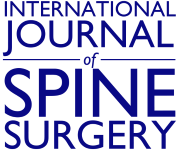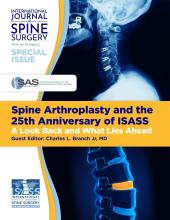ABSTRACT
Background Cervical spondylotic myelopathy is a neuromotor disorder responsible for functional limitations and decreased daily activities. Expansive open-door laminoplasty is the widely accepted procedure for the treatment of multilevel cervical spondylotic myelopathy. Among the various fixation procedures to secure the open lamina, miniplate fixation provides better clinical and radiological outcomes. However, the immediate effects on hinge fracture and hinge fracture displacement following miniplate fixation have not been proven until now.
The purpose of our study was to elucidate the impact of cervical open-door angle on the status of spinal cord expansion and hinge fracture, hinge fracture displacement, and the role of implants used during surgery.
Methods For this retrospective study, 122 patients who had undergone surgery from September 2016 to November 2017 with preoperative and postoperative radiographs were enrolled. Clinical and radiological outcomes were assessed before and after surgery.
Results There were no significant differences in demographics, surgery time, blood loss, medical comorbidities, or perioperative and postoperative complications between 2 groups. The recovery rate and Nurick score before and at the follow-up show no statistical significance between the 2 groups, P value > .05 (P = .672) and P > .05 (P = .553), respectively. The statistical analysis shows that the mean hinge fracture in the miniplate group with a cervical open angle >30° was 2.42 ± 1.68 and with a <30° open angle, 0.05 ± 0.23; whereas, in the anchor group the mean hinge fracture in >30° cervical open angle was 2.227 ± 2.50 and in <30° was 0.409 ± 0.503. The results revealed statistical significance between 2 implant groups, P = .024 in the aspect of hinge fracture displacement and implant used.
Conclusion Laminoplasty by titanium miniplate fixation holds the laminae securely, prevents hinge fracture displacement, and promotes spinal cord expansion better than suture anchor fixation.
Footnotes
Disclosures and COI: The authors declare no known conflicts of interest associated with this publication. Partial financial support was provided by National Nature Science Funding (81472140).
- ©International Society for the Advancement of Spine Surgery







